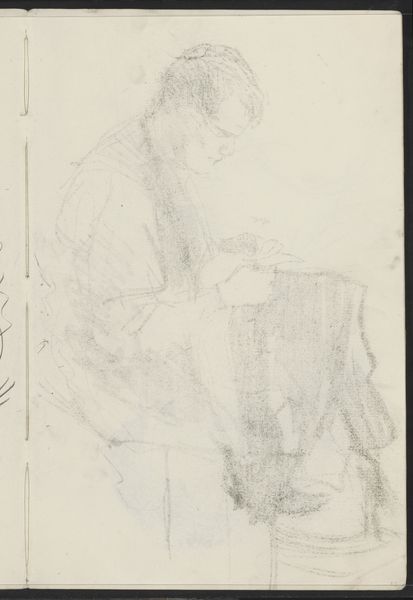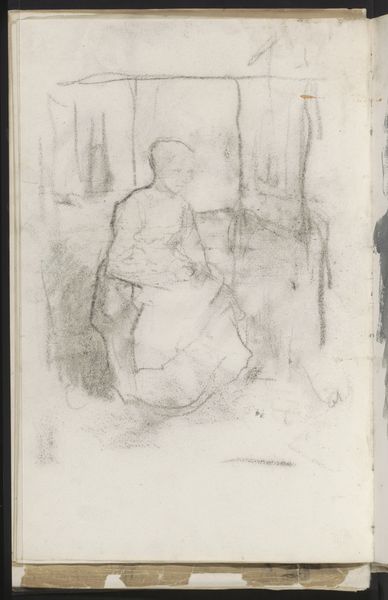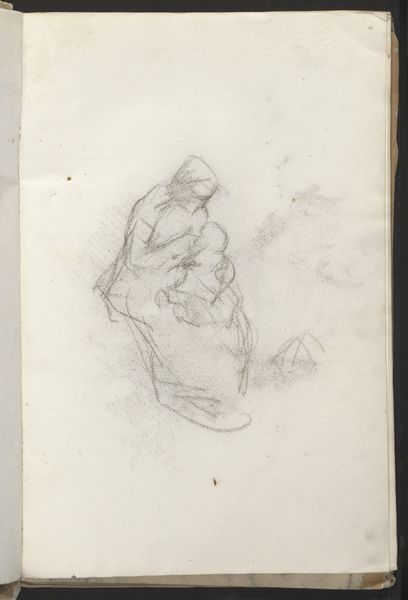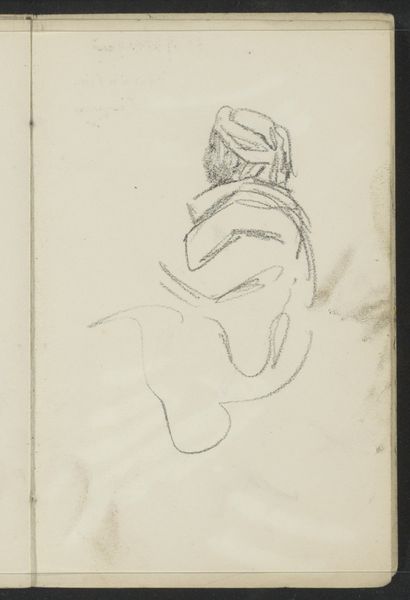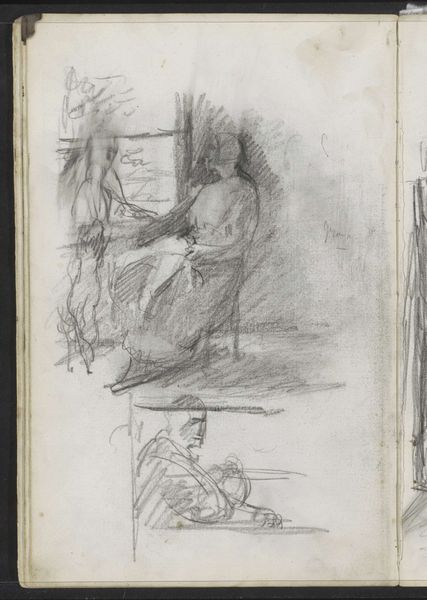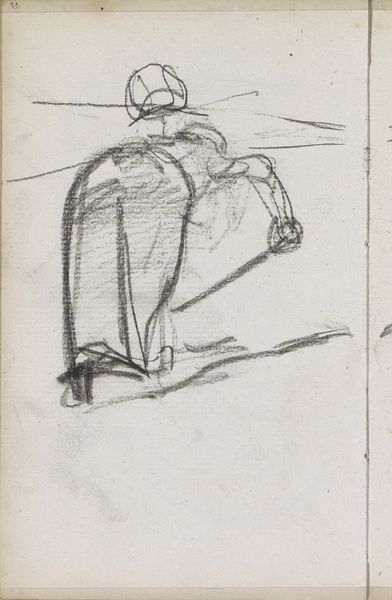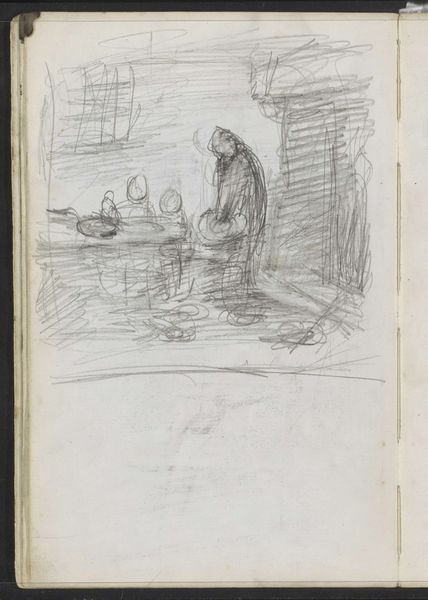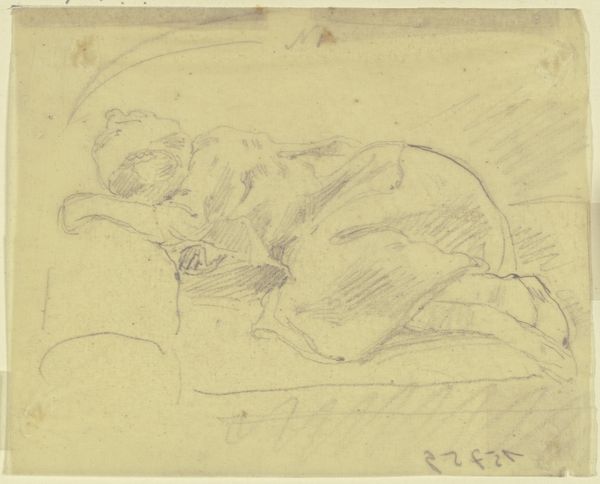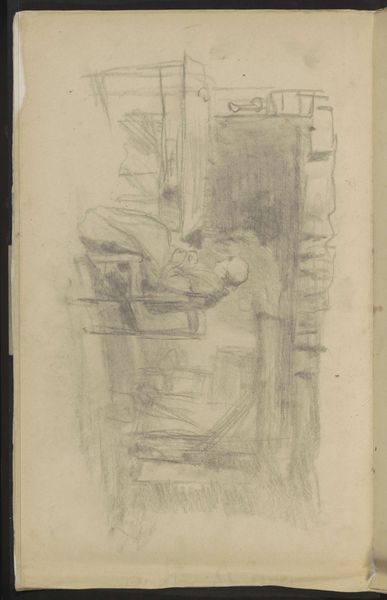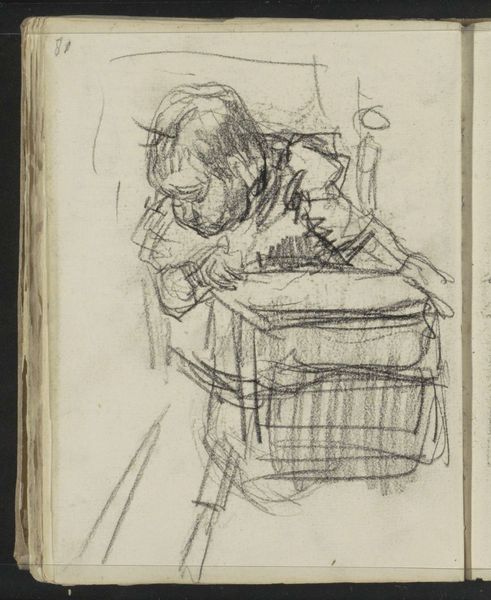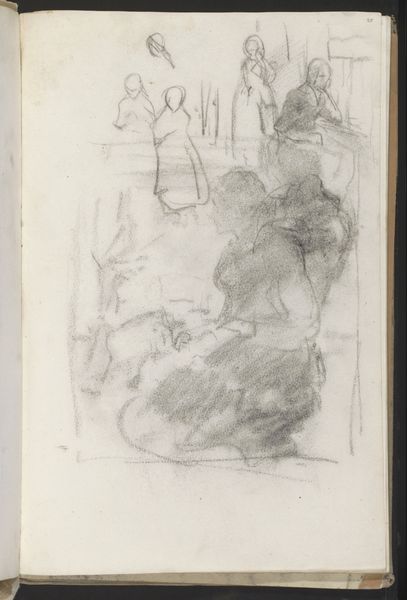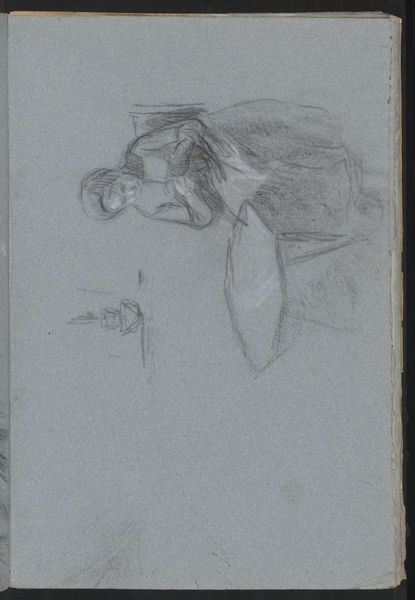
drawing, paper, pencil
#
portrait
#
drawing
#
impressionism
#
paper
#
pencil
#
genre-painting
#
academic-art
#
realism
Copyright: Rijks Museum: Open Domain
Curator: Here we have a pencil drawing on paper by Albert Neuhuys, likely created sometime between 1854 and 1914. It’s titled “Moeder met een baby op de arm,” or “Mother with a baby in her arms.” Editor: My first impression is one of quiet intimacy. The strokes are light, almost tentative, but they capture a really tender moment between mother and child. It feels very immediate, like a fleeting glimpse. Curator: I agree. Neuhuys, positioned within the Hague School and drawing heavily from realism and elements of impressionism, consistently focused on the lives of ordinary people. Images of mothers and children figure prominently within genre paintings that both reinforced and subtly challenged prevailing gender norms. Consider how themes of domesticity, prevalent then, get complicated when we see the weight of labor they depict. Editor: It’s interesting you say that. I see how the artist’s use of line contributes to this sense. The shading around the mother’s arms and back suggests both the weight of the child and, metaphorically, the weight of her role. The simplicity of the drawing directs our attention to her posture and expression. There is a curve, a yielding quality that conveys nurture but hints at the physical demand. Curator: Precisely! What’s compelling is the tension. The drawing emphasizes the universality of maternal care, a natural and tender connection. At the same time, it doesn’t shy away from intimating labor that remains systematically underappreciated. In representing this everyday scene, Neuhuys taps into then contemporary conversations around women’s roles, class, and representation. Editor: Looking at it purely from a formal standpoint, I am struck by how Neuhuys uses minimal detail to communicate so much. The unfinished quality contributes to this feeling of authenticity—as though the artist captured a real moment, rather than constructing an idealized vision. Curator: Absolutely. And I think understanding that duality, the simultaneously private and profoundly political dimension, opens up further layers of meaning. This simple sketch prompts us to reflect critically on social frameworks in nuanced ways. Editor: For me, the power lies in its subtlety and the invitation to observe the details of its composition, making it a potent reminder of art’s capacity for empathy. Curator: Indeed, Neuhuys presents us with an enduring and complex snapshot of the realities faced by women, presented in an aesthetic capturing quiet moments amid monumental circumstances.
Comments
No comments
Be the first to comment and join the conversation on the ultimate creative platform.
